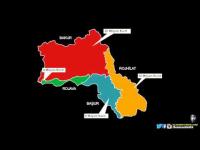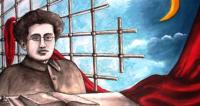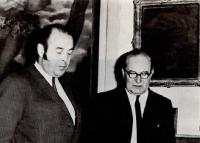ئەلیکساندەر دوگین: کورد گشتپرسی بۆ سەربەخۆیی هەر ئەنجامدەدات
ئەلیکساندەر دوگین، بیرمەند و راوێژکاری سەرۆکایەتیی رووسیا دەڵێت، کورد گشتپرسی بۆ سەربەخۆیی هەر ئەنجامدەدات و راگەیاندنی سەربەخۆیی-ش ئاسانە، بەڵام بەدەستهێنانی پشتگیری وڵاتان قورسە.
لەبارەی هەوڵی کورد بۆ سەربەخۆیی، لە لێدوانێکی تایەبت بۆ رووداو، ئەلیکساندەر دوگین گوتی "پرسی کورد ئاڵۆزە. کورد بەسەر وڵاتاندا دابەشبوونە و لە هەر سوچێکی گۆی زەوی لە هەلومەرجێکی جیاوازدا دەژین. سەربەخۆیی شتێکی چاکە، بەڵام بەرلەوەی پشتگیری لە سەربەخۆیی کورد بکەین یاخود رەتیبکەینەوە، پێویستە پرسی ناسنامە یەکلایی بێتەوە. ئەوە شتێکی روونە، کە کورد گشتپرسی بۆ سەربەخۆیی هەر ئەنجامدەدات".
لەبارەی پشتگیری رووسیا بۆ سەربەخۆیی، ئەلیکساندەر دوگین گوتی "هەرچی پشتگیرییەکەیە، دەگەڕێتەوە سەر هەڵوێستی رووسیا، ئێران و تورکیا و وڵاتە زلهێزەکانی دیکە. راگەیاندنی سەربەخۆیی ئاسانە، بەڵام بەدەستهێنانی پشتگیری وڵاتان قورسە".





